Fullerton, California, Hgh State Clinic, Hgh Injections, Hrt Doctors
Fullerton, California Blood Testing Facilities
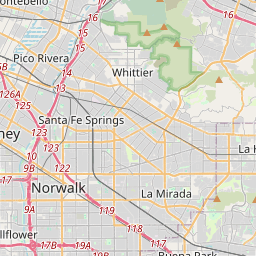

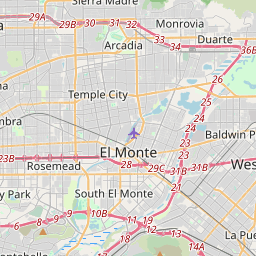

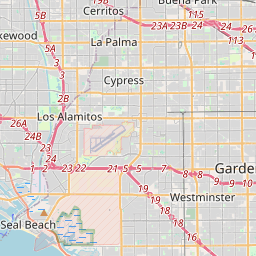













































































































































































































































































































































































































































































 Represents a LabCorp blood testing facility
Represents a LabCorp blood testing facility Represents a Quest Diagnostics blood testing facility
Represents a Quest Diagnostics blood testing facility

Nearby Labcorp Blood Testing facilities:
- Labcorp Center Distance: 1 m, 1950 Sunnycrest Dr. Suite 1800, Fullerton, Orange County, CA, 92835
- Labcorp Center Distance: 2 m, 7872 Walker St. Suite 109, La Palma, Orange County, CA, 92801
- Labcorp Center Distance: 4 m, 1201 N. Rose Dr. Suite 202, Placentia, Orange County, CA, 92870
- Labcorp Center Distance: 6 m, 12665 Garden Grove Bl. Ste 212, Garden Grove, Orange County, CA, 92843
- Labcorp Center Distance: 7 m, 705 W La Veta Ave Ste 102, Orange, Orange County, CA, 92868
- Labcorp Center Distance: 8 m, 9191 Westminster Ave. Ste 104, Garden Grove, Orange County, CA, 92844
- Labcorp Center Distance: 9 m, 15064 Moran Street, Westminster, Orange County, CA, 92683
- Labcorp Center Distance: 10 m, 100 N. Tustin Avenue, Tustin, Orange County, CA, 92780
- Labcorp Center Distance: 11 m, 1661 Golden Rain Rd, Seal Beach, Orange County, CA, 90740
- Labcorp Center Distance: 12 m, 17822 Beach Bl Suite 242, Huntington Beach, Orange County, CA, 92647
- Labcorp Center Distance: 13 m, 1190 Pacific Coast Hwy Ste C, Seal Beach, Orange County, CA, 90740
- Labcorp Center Distance: 14 m, 433 N. 4Th Street Suite 201, Montebello, Los Angeles County, CA, 90640
- Labcorp Center Distance: 15 m, 4870 Barranca Pkwy. Ste 290, Irvine, Orange County, CA, 92604
- Labcorp Center Distance: 16 m, 1501 Superior Ave. Ste 209, Newport Beach, Orange County, CA, 92663
- Labcorp Center Distance: 17 m, 12555 Central Ave. Ste Af, Chino, San Bernardino County, CA, 91710
- Labcorp Center Distance: 18 m, 400 Newport Center Dr Ste 202, Newport Beach, Orange County, CA, 92660
- Labcorp Center Distance: 19 m, 301 W. Huntington Dr. Ste 404, Arcadia, Los Angeles County, CA, 91007
- Labcorp Center Distance: 20 m, 900 S. Main St. Suite 207, Corona, Riverside County, CA, 92882
- Labcorp Center Distance: 21 m, 800 Magnolia Ave Ste 108, Corona, Riverside County, CA, 92879
- Labcorp Center Distance: 22 m, 1310 San Bernardino Rd Ste 107, Upland, San Bernardino County, CA, 91786
- Labcorp Center Distance: 23 m, 8283 Grove Ave Ste 109, Rancho Cucamonga, San Bernardino County, CA, 91730
- Labcorp Center Distance: 24 m, 29873 Santa Margarita Pkwy102, Rancho Santa Margarita, Orange County, CA, 92688
- Labcorp Center Distance: 25 m, 10801 Foothill Blvd Ste 105, Rancho Cucamonga, San Bernardino County, CA, 91730
- Labcorp Center Distance: 26 m, 26691 Plaza Drive Suite 180, Mission Viejo, Orange County, CA, 92691
- Labcorp Center Distance: 27 m, 3975 Jackson St. Ste 104, Riverside, Riverside County, CA, 92503
- Labcorp Center Distance: 28 m, 1809 Verdugo Blvd 290, Glendale, Los Angeles County, CA, 91208
- Labcorp Center Distance: 29 m, 8737 Beverly Blvd Ste 401, Los Angeles, Los Angeles County, CA, 90048
- Labcorp Center Distance: 30 m, 6927 Brockton Ave Ste 1B, Riverside, Riverside County, CA, 92506
- Labcorp Center Distance: 32 m, 665 Camino De Los Mares 303A, San Clemente, Orange County, CA, 92673
- Labcorp Center Distance: 33 m, 1821 Wilshire Blvd. Ste 210, Santa Monica, Los Angeles County, CA, 90403
- Labcorp Center Distance: 37 m, 15211 Vanowen St Ste 319, Van Nuys, Los Angeles County, CA, 91405
- Labcorp Center Distance: 38 m, 31571 Canyon Estates Dr Ste101, Lake Elsinore, Riverside County, CA, 92532
- Labcorp Center Distance: 39 m, 12712 Heacock St. Ste 7, Moreno Valley, Riverside County, CA, 92553
- Labcorp Center Distance: 40 m, 126 Avocado Ave. Ste 105, Perris, Riverside County, CA, 92571
- Labcorp Center Distance: 41 m, 399 E. Highland Ave. Ste 510, San Bernardino, San Bernardino County, CA, 92404
- Labcorp Center Distance: 42 m, 255 Terracina Blvd Ste 106, Redlands, San Bernardino County, CA, 92373
- Labcorp Center Distance: 43 m, 3936 Phelan Rd. Suite F4, Phelan, San Bernardino County, CA, 92371
- Labcorp Center Distance: 44 m, 36320 Inland Valley Dr Ste 103, Wildomar, Riverside County, CA, 92595
- Labcorp Center Distance: 45 m, 29798 Haun Rd Ste 102, Menifee, Riverside County, CA, 92586
- Labcorp Center Distance: 46 m, 7301 Medical Center Dr Ste 304, West Hills, Los Angeles County, CA, 91307
- Labcorp Center Distance: 47 m, 25405 Hancock Ave. Suite 107, Murrieta, Riverside County, CA, 92562
- Labcorp Center Distance: 48 m, 38209 47Th St East Suite C, Palmdale, Los Angeles County, CA, 93552
- Labcorp Center Distance: 49 m, 23206 Lyons Ave Ste 109, Newhall, Los Angeles County, CA, 91321
- Labcorp Center Distance: 50 m, 27699 Jefferson Ave Ste 209, Temecula, Riverside County, CA, 92590
- Labcorp Center Distance: 51 m, 587 E. Elder Street, Fallbrook, San Diego County, CA, 92028
- Labcorp Center Distance: 52 m, 17450 Main St. Suite C, Hesperia, San Bernardino County, CA, 92345
- Labcorp Center Distance: 53 m, 31150 Temecula Parkway Ste 201, Temecula, Riverside County, CA, 92592
- Labcorp Center Distance: 54 m, 31493 Rancho Pueblo Rd Ste 104, Temecula, Riverside County, CA, 92592
- Labcorp Center Distance: 55 m, 12332 Hesperia Rd Suite B, Victorville, San Bernardino County, CA, 92395
- Labcorp Center Distance: 56 m, 2655 First St. Suite 340, Simi Valley, Ventura County, CA, 93065
- Labcorp Center Distance: 57 m, 425 Haaland Dr. Ste 106, Thousand Oaks, Ventura County, CA, 91361
Nearby Quest Blood Testing facilities:
- Quest Center Distance: 6 m, 15141 Whittier Blvd, Whittier, Los Angeles County, CA, 90603-2158
- Quest Center Distance: 7 m, 1310 W Stewart Dr, Orange, Orange County, CA, 92868-3838
- Quest Center Distance: 9 m, 801 N Tustin Ave, Santa Ana, Orange County, CA, 92705-3607
- Quest Center Distance: 11 m, 11180 E Warner Ave, Fountain Valley, Orange County, CA, 92708-7515
- Quest Center Distance: 12 m, 9900 Talbert Ave, Fountain Valley, Orange County, CA, 92708-5153
- Quest Center Distance: 13 m, 18800 Main St, Huntington Beach, Orange County, CA, 92648-1718
- Quest Center Distance: 14 m, 4028 Grand Ave, Chino, San Bernardino County, CA, 91710-5486
- Quest Center Distance: 15 m, 4950 Barranca Pkwy, Irvine, Orange County, CA, 92604-8648
- Quest Center Distance: 18 m, 416 W Lastunas Dr, San Gabriel, Los Angeles County, CA, 91776-1236
- Quest Center Distance: 20 m, 2250 S. Main St, Corona, Riverside County, CA, 92882-2534
- Quest Center Distance: 21 m, 23521 Paseo De Valencia, Laguna Hills, Orange County, CA, 92653-3673
- Quest Center Distance: 22 m, 1127 Wilshire Blvd, Los Angeles, Los Angeles County, CA, 90017-3901
- Quest Center Distance: 23 m, 1399 E Foothill Blvd, Upland, San Bernardino County, CA, 91786-4060
- Quest Center Distance: 24 m, 23441 Madison St, Torrance, Los Angeles County, CA, 90505-4735
- Quest Center Distance: 25 m, 801 S Chevy Chase Dr, Glendale, Los Angeles County, CA, 91205-4437
- Quest Center Distance: 26 m, 520 N Prospect Ave, Redondo Beach, Los Angeles County, CA, 90277-3043
- Quest Center Distance: 28 m, 9041 Magnolia Ave, Riverside, Riverside County, CA, 92503-3956
- Quest Center Distance: 29 m, 8501 Wilshire Blvd, Beverly Hills, Los Angeles County, CA, 90211-3117
- Quest Center Distance: 31 m, 4646 Brockton Ave, Riverside, Riverside County, CA, 92506-0103
- Quest Center Distance: 37 m, 6485 Day St, Riverside, Riverside County, CA, 92507-0926
- Quest Center Distance: 39 m, 32251 Mission Trl, Lake Elsinore, Riverside County, CA, 92530-4536
- Quest Center Distance: 41 m, 2150 N Waterman Ave, San Bernardino, San Bernardino County, CA, 92404-4811
- Quest Center Distance: 42 m, 18250 Roscoe Blvd, Northridge, Los Angeles County, CA, 91325-4265
- Quest Center Distance: 50 m, 27699 Jefferson Ave, Temecula, Riverside County, CA, 92590-2696
- Quest Center Distance: 54 m, 1220 La Venta Dr., Westlake Village, Ventura County, CA, 91361-3749
- Quest Center Distance: 55 m, 12370 Hesperia Rd, Victorville, San Bernardino County, CA, 92395-4787
- Quest Center Distance: 59 m, 3601 Vista Way, Oceanside, San Diego County, CA, 92056-4559
- Quest Center Distance: 68 m, 477 N El Camino Real, Encinitas, San Diego County, CA, 92024-1353
- Quest Center Distance: 69 m, 500 Paseo Camarillo, Camarillo, Ventura County, CA, 93010-5900
- Quest Center Distance: 79 m, 555 E Tachevah Dr, Palm Springs, Riverside County, CA, 92262-5750
- Quest Center Distance: 87 m, 309 E Mountain View St, Barstow, San Bernardino County, CA, 92311-2814
- Quest Center Distance: 88 m, 57370 29 Palms Hwy, Yucca Valley, San Bernardino County, CA, 92284-2900
- Quest Center Distance: 91 m, 807D Tucker Rd, Tehachapi, Kern County, CA, 93561-2510
- Quest Center Distance: 92 m, 5103 Garfield St, La Mesa, San Diego County, CA, 91941-5103
- Quest Center Distance: 97 m, 81715 Dr Carreon Blvd, Indio, Riverside County, CA, 92201-5564
- Quest Center Distance: 98 m, 480 4Th Ave, Chula Vista, San Diego County, CA, 91910-4411
Fullerton California Hormone Replacement Therapy Services
Hormone Optimization is a new and exciting area of study that's taking the field of clinical wellness by storm. Our Hormones are responsible for making sure that our body's systems maintain themselves in delicate synchronicity, and Hormone Replacement Therapy is a form of medical intervention designed to restore Hormone Balance and help men and women live healthier lives.
Our Board Certified and Licensed Hormone Clinic provides top-tier HRT Services to men and women 30 and older, whether you live in Fullerton, or anywhere in the state of California. If you'd like to establish a relationship with our California Hormone Clinic, we strongly encourage you to complete the form on this page to arrange for a free consultation, or just give us a call! Our qualified and highly competent Hormone Specialists would love to hear from you and provide you with information about our products and services!
Finding a Hormone Clinic in Fullerton California
If, after your consultation, you decide you'd like to work with us to restore your Hormone Balance and enhance your vitality, we'll arrange for a preliminary meeting with a local Fullerton physician so that your needs can be assessed. During this medical appointment, you'll undergo a brief physical designed to establish your current wellness and to visually evaluate for symptoms.
You'll also assent to a blood test, which we will use to reveal your underlying Hormone Balance, along with many other markers of your health, including HDL/LDL Cholesterol, Blood Count, and more. Armed with the results of your Comprehensive Hormone Panel, our Hormone Doctors and Specialists will set to work creating a plan that is designed for your specific physiological needs so that you can experience the maximum results for your money!
Fullerton HGH Injections for Somatopause
We consider Human Growth Hormone Therapy to be one of the most effective and prized treatments that we offer at our Specialty Hormone Clinic. HGH Deficiency is a serious medical condition that is commonly overlooked, mistaken merely for aging. Human Growth Hormone Deficiency is an age-related metabolic issue which impacts practically all of the systems which support human form and function.
HGH Deficiency depletes the body's ability to perform the rejuvenative functions that keep us looking and feeling young. Somatopause is a real condition—HGH Levels falls slowly and steadily from around the age of thirty and onward. If you've experienced issues related to fatigue, weight gain, loss of strength, depression, focus problems, trouble healing, thinning hair, coarse skin, or trouble recovering from illness, we may be able to help! HGH Injections are easy to self-administer and counteract the debasing influence of declining HGH Levels.
Sermorelin Injections for Growth Hormone Deficiency in Fullerton
Though Human Growth Hormone has an extended track record of success when it comes to the successful treatment of clinical HGH Deficiency, there are other valid options for treatment. Our clinic prides itself on offering a variety of paths to wellness for our patients, based both on their preference and their budget. Sermorelin is an affordable HGH Alternative that boosts Growth Hormone Production by stimulating the Somatotroph cells that are responsible for the secretion of HGH. For many, Sermorelin may even be the superior option. Most patients struggling with Somatopause retain the ability to produce their own Growth Hormone, provided the proper and appropriate stimulation. After receiving the diagnostic results from your Hormone Panel, we will help you choose the best option to suit your needs!
Overcome Low Libido and Low-T with Fullerton Testosterone Therapy Injections
For men, there's little that is more upsetting and humiliating than not being able to maintain a healthy and active sex life. As Testosterone Levels continue to plummet as men grow older, these issues become both more common and more problematic. Men, we understand and sympathize with your concerns, and that's why we offer Bio-Identical Testosterone for Low-T.
Testosterone Therapy is a versatile form of Hormone Replacement Therapy that is available via many different, equally valid means. If you're interested in a topical formulation, we offer Testosterone Creams as well as Transdermal Low-T Patches. If you're looking for an affordable approach that you also don't have to think about every day, Testosterone Cypionate and Enanthate Injections both provide significant relief from the symptoms of Testosterone Deficiency while only requiring bi-weekly injections.
Low-T Treatments have been shown to not only improve sex drive and erectile function, but also to improve cardiovascular balance, increase muscle mass, ward off fatigue, increase exercise capacity, and improve mood. Don't resign yourself to Testosterone Deficiency, contact us for more information!
Information and Facts About Fullerton
Fullerton is one of the many populous cities that make up the highly suburban Orange County, California. Fullerton began as an agricultural community developed in the year 1887 and became a city in 1904. The city is also home to one of the largest universities in California—Cal State Fullerton. The city's economy primarily revolves around the University, and the motto of Fullerton is “the Education Community.” Fullerton College is also located there, a massive community college which serves more than 25,000 students.
Unlike many Los Angeles suburbs, Fullerton has a strong, self-sustained economy, buoyed not only by education but by manufacturing. Some of the most significant employers in the city are Kraft Foods, Albertsons, Alcoa, and Raytheon. Cities located near Fullerton include Anaheim, Placentia, Brea, La Habra, La Mirada, and Buena Park. The largest outdoor space in the city is Craig Regional Park, located a short walk north of Cal State Fullerton. Fullerton is famous for its music scene and has produced a high volume of artists, especially those associated with alternative genres. Some notable musicians that got their start in Fullerton are Gwen Stefani, Social Distortion, Berlin, and Tim Buckley.
Some of the most popular attractions in Fullerton are Fullerton Arboretum, Fullerton Museum Center, Laguna Lake Park, and Muckenthaler Art and Cultural Center. West Coyote Hills is an intriguing place because it is one of the only undeveloped, open spaces in Orange County. In a region so densely populated, this slice of wild land is nearly all that's left.
All About Fullerton, California Geographic Area
Fullerton is a city located in northern Orange County, California. As of the 2010 census, the city had a total population of 135,161.
Fullerton was founded in 1887 by George and Edward Amerige and named for George H. Fullerton, who secured the land on behalf of the Atchison, Topeka and Santa Fe Railway. Historically it was a center of agriculture, notably groves of Valencia oranges and other citrus crops; petroleum extraction; transportation; and manufacturing. It is home to several educational institutions, notably the California State University, Fullerton.
Evidence of prehistoric animal habitation, such as saber-toothed cats and mammoths, is present in Ralph B. Clark Regional Park in the northwest of the city. Europeans first passed through the area in 1769 when Gaspar de PortolRr led an expedition north to establish Mission San Gabriel Arcangel, after whom the local American Indian population were dubbed the GabrieliR±os. The land later became part of Rancho San Juan CajR³n de Santa Ana, granted to Juan Pacifico Ontiveros, a Spanish soldier.
Ontiveros began to sell parcels of the Rancho to migrant Americans settling and developing California in the aftermath of the 1849 Gold Rush, including Massachusetts native Abel Stearns. In the 1860s, Stearns sold in turn to Domingo Bastanchury, a Basque shepherd.
In 1886 while in the area on a duck hunting vacation, Malden brothers George and Edward Amerige, heard rumors that the California Central Railroad, a subsidiary of the Santa Fe Railway, was looking for land. Sensing opportunity, they arranged to buy 430 acres (1.7 km2) north of Anaheim for approximately $68,000.
They then began negotiations with George H. Fullerton, president of the Pacific Land and Improvement Company, also a Santa Fe subsidiary. They offered free right-of-way and half interest in the land to the railroad if Fullerton's survey were revised to include the proposed town site, and on July 5, 1887 Edward Amerige formally staked his claim at what is now the intersection of Harbor Boulevard and Commonwealth Avenue.
In 1894 Charles Chapman, a retired Chicago publisher and a descendant of John "Johnny Appleseed" Chapman, purchased an orange orchard in eastern Fullerton. The Valencia variety of oranges he promoted from his Santa Ysabel Ranch, well suited to the local climate, proved a boon to producers; Fullerton boasted more orange groves than any other municipality in the United States. Cultivation of walnuts and avocados also flourished, and the Western railroad town became an agricultural center. Fullerton incorporated in 1904.
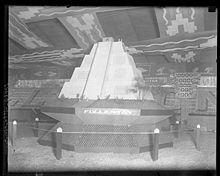
Drilling for petroleum began in 1880 with the discovery of the Brea-Olinda Oil Field and fueled the first real boom, peaking in the 1920s. Construction reflected the vogue for Spanish Colonial and Italian Renaissance-inspired architecture, as in the historic Fox Fullerton Theatre (erected 1925); the home of Walter and Adella Muckenthaler, designed by Frank Benchley (erected 1924); and the city's chief landmark, the Plummer Auditorium and clock tower (erected 1930). Fullerton College was established at its present location at Chapman Avenue and Lemon Street in 1913. Meanwhile, the city banned all overnight street parking in 1924 ae a law enforced to the present day. The period from 1910-1950 represented a golden age for the city which like other Southern California cities were marked with elegant architecture ranging from the Beaux Arts Movement to the distinctive California Mediterraneum architecture, which in turn were surrounded by bucolic farms and parks. Significant public works projects were constructed during this period, including the conversion of a southwestern sewer farm into Fullerton Municipal Airport at the behest of Placentia ranchers and aviators William and Robert Dowling in 1927.
Following the depression, concentration of industry, a depressed farming economy, and cheap land development shattered the earlier period quality of life. Through the mid-1900s the economy shifted toward food processing rather than food production, as well as manufacturing; southeastern Fullerton became an industrial center. Val Vita Food Products (later Hunt Wesson and today part of ConAgra Foods, Inc.) began operating a citrus juice plant in western Fullerton in 1932. By 1941 it had become the largest food processing company in the US. In 1934 A.W. Leo, Tom Yates and Ralph Harrison developed the first Hawaiian Punch recipe in a converted garage in Fullerton. The city also became a producer of aerospace equipment, electrical and electronic components, navigation systems, and laboratory instruments.
In 1949 Dick Riedel and Bill Barris piloted the Sunkist Lady, a modified Aeronca Sedan, out of the Fullerton airport to set an endurance flight record of 1,008 hours and 2 minutes.
Also in 1949, Fullerton was the setting in which Leo Fender developed and refined the design of the Fender Telecaster, a guitar which would later be used among some of the greatest musicians of the 20th and 21st Century. Among them: Keith Richards, Joe Strummer, Waylon Jennings, Dwight Yoakam, Greg Camp, Jimmy Page, Kurt Cobain, and many others.
Although Fullerton like other Southern California cities had experienced an expansion of population due to housing development, this increased by an order of magnitude during the post war years. Fullerton's population soared after World War II as American veterans migrated to California, bought housing in the land development which destroyed the surrounding farming and park areas, and in particular after the construction of Interstate 5 and development in neighboring Anaheim.
To serve the growing population, the California State Legislature authorized Orange County State College in 1957, which began operating out of Fullerton high schools in 1959. In 1963, it moved to its present campus on State College Boulevard, and later, after several name-changes, was finally redesignated California State University, Fullerton. Other institutions followed, earning Fullerton a reputation as an "Education City." The Fullerton Arboretum, a 26 acre (105,000 m ²) botanical garden, opened in the northeastern part of the city adjacent the campus in 1979.
Manufacturing growth leveled off as ever-soaring property prices, increasing environmental regulation, traffic, and other pressures increased. By the late 20th century the city had lost much of its rural character in favor of suburban housing tracts and shopping centers.
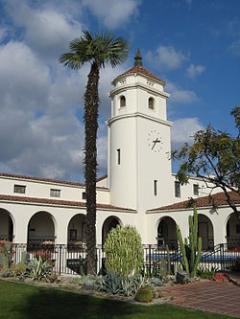
The first years of the 21st century have seen several political issues played out against a backdrop of class division (between the more affluent northern and western parts of the city and the southern portion of the city, which borders Anaheim), rapidly diminishing supplies of undeveloped land, and demographic changes (including the influx of Asian and Latino immigrants into an area previously dominated by Caucasian Americans).
As in many cities, growth and development are contentious issues. In the 1990s, the downtown commercial district had become economically depressed, and was known mainly for being an area of sleepy antique stores and small shops. A symbol of downtown's problems was the Fox Theatre, a local landmark, which had fallen into disrepair. As of November 2004, a fundraising drive had accumulated sufficient funds to buy the theater, but not yet enough money to restore it. By 2006, restoration was started.
During this same period, the downtown area (a.k.a. DTF), especially south of Commonwealth Avenue, has become more of a busy entertainment district, described by the OC Weekly as "Bourbon Street West." In less than five years, some 30 businesses that sell alcohol have opened, making the downtown area much more active at night. Ranging from a mixture of Mexican cantinas and Asian bars to Jazz and local pubs, with the festive atmosphere have come problems such as public drunkenness, fights and a shortage of parking; a police task force last year has addressed some of these problems.
The 293-acre (1.19 km2) Hughes Aircraft Company's Ground Systems Group campus in western Fullerton was redeveloped into a major new residential and commercial district, called Amerige Heights, in 2001 ae2004. This development was accompanied by extreme shifts in neighborhood property values, first dropping precipitously in the late 1980s to early 1990s as the former Hughes employees sold their houses, and then rising rapidly as part of a general increase in real estate values throughout Orange County.
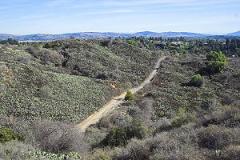
Fullerton is located at 33 °52 a²48 a³N 117 °55 a²43 a³W / 33.88 °N 117.92861 °W / 33.88; -117.92861 (33.879914, -117.928749). It is approximately 25 miles (40 km) southeast of downtown Los Angeles, and approximately 11 miles (18 km) north-northwest of Santa Ana, the county seat. The city has a mean elevation of 150 feet (46 m) and lies approximately 11 miles (18 km) northeast of the Pacific Ocean straight-line distance. It has a Mediterranean climate, with a mean temperature of 62.2 degrees Fahrenheit (16.8 °C).
According to the United States Census Bureau, the city has a total area of 22.4 square miles (58 km2). 22.4 square miles (58 km2) of it is land and 0.01 square miles (0.026 km2) of it (0.05%) is water.
It is bordered by La Habra and Brea on the north, La Mirada on the northwest, Buena Park on the west, Anaheim on the south, and Placentia on the east.
The flat downtown area is laid out in a grid plan centered at the intersection of Harbor Boulevard and Commonwealth Avenue. After recent renewal and beautification projects, it has attracted specialty stores, coffee shops, and restaurants, and has uncharacteristically retained much of its downtown character. Southeastern Fullerton is historically the industrial sector, and is home to small manufacturing, particularly east of Raymond Street and south of Commonwealth.
The northern and western reaches of Fullerton are dominated by the Coyote Hills, a low-lying mountain range divided into the East Coyote Hills and West Coyote Hills; the lands nestled to their south and west are known as Sunny Hills. For most of the city aos history these areas were groves of citrus trees, open scrubland, and oil fields. While equestrian trails and many old estates endure along Bastanchury Road, the meandering roads through these areas today mostly connect a succession of housing tract subdivisions and commercial developments. In recent years, the City Council has tried to allow development in the remaining open land throughout the city. The most notable impending project, in West Coyote Hills, has been met with opposition by some of the citizens in the area.
According to the City's 2010 Comprehensive Annual Financial Report, the top employers in the city are:
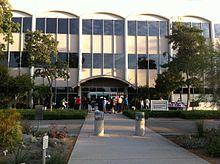
Fullerton is a general law city with a council-manager government system. Legislative authority is vested in a City Council of five non-partisan members who serve four-year staggered terms, who elect a chair who serves as mayor but hire a professional city manager for day-to-day operations. All Council seats are elected at large. Elections are held every two years and are consolidated with the statewide general elections held in November of even numbered years.
As of July 2009 there were 69,791 registered voters in the city:
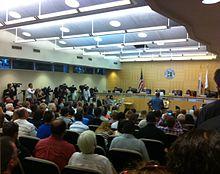
In 2011, a major controversy arose in the city over misconduct by the Fullerton Police, involving sexual assault by an officer against women he arrested and the killing of a mentally ill homeless man by police. This has led to the indictment of two officers and a recall campaign against McKinley, Bankhead, and Jones. Officer Manuel Ramos, 37, is charged with second-degree murder and involuntary manslaughter, and Cpl. Jay Patrick Cicinelli, 39, is charged with involuntary manslaughter and felony use of excessive force with regards to the death of Kelly Thomas. They have pleaded not guilty. On July 5, 2012, (one year after the beating death), the father of Kelly Thomas filed a lawsuit against the city and six officers, two of whom are facing criminal charges. The lawsuit also names former police chiefs Patrick McKinley and Michael Sellers. The suit alleges the violation of Kelly Thomas' federal and state civil rights; assault and battery; negligence and supervisor liability among others as causes of action. It seeks unspecified damages. Thomas' mother, Cathy, who is divorced from Ron Thomas, has already received a $1-million settlement from the city. On July 3, 2012, Officer Ramos's employment was terminated.
In a landslide, city council members Dick Jones, Don Bankhead and Pat McKinley were voted out of office in a June 5, 2012, recall election. Each was voted out by an almost identical majority of nearly 66%. Their replacements are: Travis Kiger, a planning commissioner and blogger for the site Friends for Fullerton's Future, who fills Jones' term, which expires December 4, 2012; Greg Sebourn, a land surveyor, who fills Bankhead's term, which ends December 2, 2014; and attorney Doug Chaffee, who fills McKinley's term, which also ends December 2, 2014. All were sworn into office in July 2012. Tony Bushala, a leading organizer of the Fullerton recall election, said he was seeking accountability for Kelly Thomas' death. The city's other two council members are not facing a recall.
West Coyote Hills is a ridge lying mostly in northern Fullerton, including 510 acres owned by Pacific Coast Homes (a land development division of the Chevron Corporation) that are the largest remaining tract of undeveloped land in north Orange County. The current development agreement calls for building houses on some of the land while donating the remainder to the city as a nature preserve. A group that supports keeping the entire area as open space has qualified a referendum for a November 2012 election.
Fullerton, like the rest of Orange County, has historically favored conservative Republicans in state and federal elections. In the state legislature Fullerton is located in the 33rd and 34th Senate Districts, represented by Republican Mimi Walters and Democrat Lou Correa, and in the 72nd Assembly District, represented by Republican Chris Norby. Federally, Fullerton is located in California's 40th and 47th congressional districts, which have Cook PVIs of R +8 and D +5 respectively and are represented by Republican Ed Royce and Democrat Loretta Sanchez respectively.
Fullerton has five public high schools within the city limits, all part of the Fullerton Joint Union High School District:
Other public schooling in Fullerton is provided by the Fullerton School District. There are three public junior high schools, enrolling grades 7-8: Ladera Vista, Nicolas, and D. Russell Parks Junior High School. Fullerton has two public elementary K-8 schools: Beechwood and Fisler. Fullerton has fifteen public elementary schools enrolling grades K-6: Acacia, Commonwealth, Fern Drive, Golden Hill, Hermosa Drive, Laguna Road, Maple, Orangethorpe, Pacific Drive, Raymond, Richman, Rolling Hills, Sunset Lane, Valencia Park, and Woodcrest.
Fullerton's Catholic schools are affiliated with the Roman Catholic Diocese of Orange.
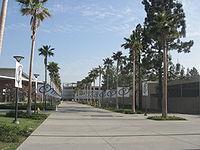
Fullerton is home to a vibrant music scene. It was a center for the Orange County hardcore punk music scene, producing acts such as The Adolescents, Agent Orange, Social Distortion, D.I., and T.S.O.L., the "fathers of hardcore punk" The Middle Class, Gwen Stefani, lead vocalist of the alternative rock group No Doubt, was a student at CSUF and the group performed there regularly. Other popular groups from the area include The Offspring and Lit. The popular singer-songwriter Jackson Browne also attended Sunny Hills High School in the city.
Contributing greatly to Fullerton's musical heritage was the Fender musical instrument company, whose products such as the Stratocaster and Telecaster electric guitars, Precision Bass bass guitar, and Twin Reverb guitar amplifier revolutionized the music business and contributed greatly to the development of rock and roll. Leo Fender sold the company to CBS in 1964; production continued in the Fullerton plant until 1985, when the then-ruined company was sold to a group of private investors. (It was later reconstituted as Fender Musical Instrument Corporation, with its major production facilities in neighboring Corona and across the US-Mexico border in Ensenada, Baja California, and its headquarters in Scottsdale, Arizona.) In 1980, Leo Fender and his original partner George Fullerton (relation to the Fullerton founder of the same name unknown) reunited and started a new company, G&L (George and Leo) Guitars, which currently occupies the old Fender factory in Fullerton.
The Muckenthaler Cultural Center on Malvern Avenue near Euclid Avenue houses art galleries and a theater group. The former estate of the Muckenthaler family, it was donated to the city by Harold Muckenthaler in 1965.
The Fullerton Museum Center is a multidisciplinary exhibit space housed in the old Carnegie Library downtown.
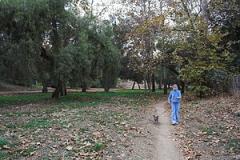
Fullerton is also home to the Fullerton Public Library. The Main Library is located on Commonwealth Avenue in Downtown Fullerton and adjacent to the City Hall. There is also a branch library, called the Hunt Branch on Basque Avenue.
Fullerton is also home to a diverse and ever-growing theater scene. The Fullerton Civic Light Opera, one of the largest theater companies in Southern California, is based at the Plummer Auditorium. Local educational institutions, such as Fullerton College and Fullerton High School's Academy of the Arts, are the source of numerous large-scale productions. There are also several storefront theaters, including the Maverick Theater, Stages Theater and the Hunger Artists Theatre Company. The Maverick Theatre is the host for the "World Famous Skipper Stand Up Show." Held six times a year, the The Skipper Stand Up Show has, since 2006, showcased former and current skippers from Disneyland aos famous attraction, the Jungle Cruise.
Fullerton maintains more than 50 city parks and is home to Hillcrest Park, the Craig Regional Park and Ralph B. Clark Regional Park. The Fullerton Arboretum comprises 26 acres (105,000 m ²) of sculpted gardens and unusual plants in northeastern Fullerton. Additionally the city features approximately 200 acres (0.81 km2) of recreational land in the Brea Dam Recreational Area, plus an equestrian center and trails, two golf courses, a tennis center located behind St. Jude Hospital and the Janet Evans swim Complex.
The city is also one of the few Southern California municipalities to be served by a completely independent newspaper, the Fullerton Observer. The Observer is an all-volunteer paper that is printed two times a month. It was founded in the late 1970s by Ralph Kennedy, a fair housing and civil rights activist who advocated saving Coyote Hills as open space.In 2010, the city of Fullerton and the Orange County Register came out in court against the 32-year-old Fullerton Observer in its request to adjudicate the paper. In response to the city of Fullerton and the Orange County Register's request the Fullerton Observer prove itself a newspaper, the Fullerton Observer dropped its court case to be adjudicated a newspaper.
Fullerton is also home to the Golden Baseball League's Orange County Flyers (formerly known as the Fullerton Flyers). The team's home is Goodwin Field, home to the Cal State Fullerton Titans.
The 2010 United States Census reported that Fullerton had a population of 135,161. The population density was 6,043.9 people per square mile (2,333.6/km ²). The racial makeup of Fullerton was 72,845 (53.9%) White (38.2% non-Hispanic white), 3,138 (2.3%) African American, 842 (0.6%) Native American, 30,788 (22.8%) Asian, 321 (0.2%) Pacific Islander, 21,439 (15.9%) from other races, and 5,788 (4.3%) from two or more races. Hispanic or Latino of any race were 46,501 persons (34.4%).
The Census reported that 132,084 people (97.7% of the population) lived in households, 2,318 (1.7%) lived in non-institutionalized group quarters, and 759 (0.6%) were institutionalized.
There were 45,391 households, out of which 16,155 (35.6%) had children under the age of 18 living in them, 23,240 (51.2%) were opposite-sex married couples living together, 5,502 (12.1%) had a female householder with no husband present, 2,505 (5.5%) had a male householder with no wife present. There were 2,366 (5.2%) unmarried opposite-sex partnerships, and 290 (0.6%) same-sex married couples or partnerships. 9,771 households (21.5%) were made up of individuals and 3,342 (7.4%) had someone living alone who was 65 years of age or older. The average household size was 2.91. There were 31,247 families (68.8% of all households); the average family size was 3.43.
The population was spread out with 31,558 people (23.3%) under the age of 18, 17,522 people (13.0%) aged 18 to 24, 37,764 people (27.9%) aged 25 to 44, 32,465 people (24.0%) aged 45 to 64, and 15,852 people (11.7%) who were 65 years of age or older. The median age was 34.8 years. For every 100 females there were 96.6 males. For every 100 females age 18 and over, there were 94.4 males.
There were 47,869 housing units at an average density of 2,140.5 per square mile (826.5/km ²), of which 24,600 (54.2%) were owner-occupied, and 20,791 (45.8%) were occupied by renters. The homeowner vacancy rate was 1.1%; the rental vacancy rate was 7.0%. 73,127 people (54.1% of the population) lived in owner-occupied housing units and 58,957 people (43.6%) lived in rental housing units.
In 2000, there were 44,771 housing units at an average density of 2,016.7 per square mile (778.7/km ²). There were 43,609 households out of which 33.0% had children under the age of 18 living with them, 51.8% were married couples living together, 11.0% had a female householder with no husband present, and 32.1% were non-families. 23.5% of all households were made up of individuals and 7.3% had someone living alone who was 65 years of age or older. The average household size was 2.83 and the average family size was 3.37.
In the city the population was spread out with 25.1% under the age of 18, 11.5% from 18 to 24, 32.3% from 25 to 44, 19.8% from 45 to 64, and 11.3% who were 65 years of age or older. The median age was 33 years. For every 100 females there were 97.7 males. For every 100 females age 18 and over, there were 96.1 males.
The median income for a household in the city was $57,345 (Orange County 2005), and the median income for a family was $75,700. Males had a median income of $40,674 versus $31,677 for females. The per capita income for the city was $23,370. About 8.0% of families and 11.4% of the population were below the poverty line, including 13.6% of those under age 18 and 5.4% of those age 65 or over.
Fullerton, founded as a railroad town, is still bisected by the BNSF Railway, upon whose tracks run Amtrak trains 3 and 4, the Southwest Chief, between Chicago and Los Angeles, the Pacific Surfliner to Los Angeles, Santa Barbara, and San Diego and Metrolink commuter rail trains. Average trip time on Metrolink or Amtrak to Los Angeles is 30 minutes.
The Fullerton Train Station is located downtown at the Fullerton Transportation Center, which also serves as a major bus depot for the Orange County Transportation Authority (OCTA).
Fullerton is crossed by three major freeways. State Route 91 runs east-to-west down the length of the city south of Orangethorpe Avenue. It intersects with Interstate 5, the Santa Ana Freeway, in the west near Magnolia Avenue and with State Route 57, the Orange Freeway, in the east near State College Boulevard.
Fullerton Municipal Airport, the only general aviation airport remaining in Orange County, located in the southwest of the city, is the last remnant of the Hughes Company in the area, which was prominent in the aerospace industry up until the 1970s. From the early 1970s through the early 1980s the airport was served by Golden West Airlines, one of the larger commuter airlines of the period.

Fire protection in Fullerton is provided by the Fullerton Fire Department with ambulance transport by Care Ambulance Service. The Fullerton Police Department provides law enforcement, while the California State University Police Department also has law enforcement jurisdiction in areas of the city near the CSU Fullerton campus.
Word Count: 4687







